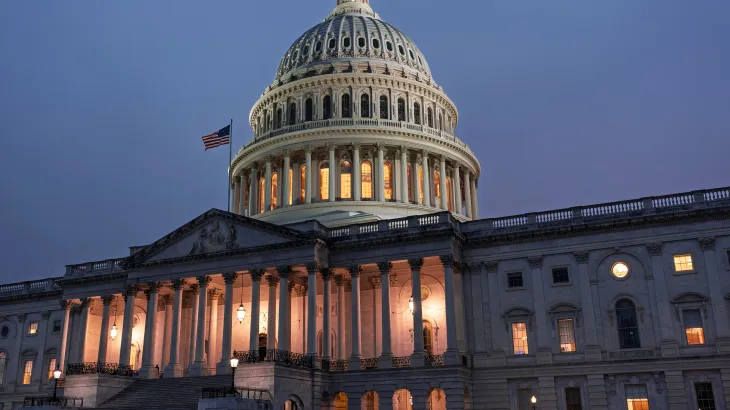The United States federal government officially shut down on October 1, 2025, after lawmakers in the Senate failed to pass a crucial funding bill to keep operations running into the new fiscal year. With this deadlock, America has once again entered a familiar cycle of political standoffs and nationwide disruptions.
Why Did the Shutdown Happen?
The shutdown was triggered when the Senate vote on the funding measure fell short of the required 60 votes. The final tally stood at 55 in favor and 45 opposed, leaving the government unable to legally spend money for many departments and programs.
The battle was largely political, with Republicans and Democrats blaming each other for the deadlock. Key disagreements centered on healthcare subsidies, budget allocations, and temporary funding measures.
What Services Are Affected?
Whenever a shutdown occurs, the government classifies its operations into “essential” and “non-essential” categories. Essential services continue to function but may do so with staff working unpaid until funds are restored, while non-essential functions are halted or delayed.
Here are some of the major effects this time:
- Federal Workers: Around 750,000 employees are expected to be furloughed, costing the economy an estimated $400 million per day.
- Postal Service: Stays open, since it operates on its own independent revenue.
- Medicare & Medicaid: These programs continue but may face delays in services such as card distribution and processing.
- Homeland Security: Core law enforcement and border functions remain active, though around 14,000 employees face furloughs.
- Air Travel: Over 11,000 FAA staff could be furloughed, raising concerns about delays and safety oversight in aviation.
How Long Could It Last?
No one knows for sure. Some shutdowns in U.S. history have lasted only a few days, while the longest one, during 2018 under President Trump, dragged on for 35 days. The current stalemate could end quickly if a continuing resolution or a new funding bill is passed by Congress and signed by the President.
Political Blame Game
Shutdowns have become a recurring feature of American politics, with both parties using them as leverage in negotiations. In this case:
- Republicans argue that Democrats are blocking temporary funding bills.
- Democrats insist on including provisions like healthcare subsidies and social support extensions.
While the political wrangling continues, ordinary citizens and federal workers are left to deal with the uncertainty.
What This Means for Americans
For most citizens, immediate impacts may not be visible. Mail will still be delivered, military operations will continue, and Social Security checks will still be issued. However, the longer the shutdown drags on, the more real-life consequences will become clear—ranging from flight delays to disruptions in public services and economic slowdowns.
Conclusion
The U.S. government shutdown of October 2025 highlights once again how political gridlock can paralyze the world’s largest economy. While leaders in Washington debate over policies and budget lines, millions of Americans—especially federal workers—are forced to live with financial insecurity and uncertainty.
How long this shutdown lasts will depend on how quickly lawmakers can set aside their differences and agree on a funding deal. Until then, the nation remains caught in the middle of another costly political standoff.








